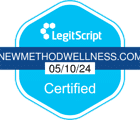Self-medicating through alcohol and drugs is a popular coping mechanism for millions of Americans who suffer from a range of anxiety disorders. According to the Anxiety and Depression Association of America (ADAA), anxiety disorders are the most common mental illness in the United States, affecting 40 million adults every year, but only 36.9% receive treatment for their anxiety. It’s more common for patients to meet the criteria for co-occurring anxiety disorders and substance use disorders than just anxiety disorders alone, as the past 20 years of research studies suggest. Alcohol and drug rehabilitation alone will not effectively solve a person’s addiction in the long run; dual diagnosis treatment of both disorders, delivered by a multidisciplinary team of licensed addiction professionals and therapists, gives individuals the comprehensive care they need for long-lasting recovery. Left untreated, anxiety disorders increase the risk for relapse.
Social Anxiety Disorder (SAD), also known as Social Phobia
Stage fright is the best way to describe someone who has Social Anxiety Disorder, a paralyzing form of anxiety that takes over when the fear of being negatively evaluated is present. Stage fright isn’t always about being on stage; it applies to any social situation where one may feel clumsy, stupid, awkward or boring in front of others. Those with social phobia will go out of their way to avoid potentially embarrassing situations, but when the perceived threat cannot be avoided, persons with this disorder suffer intense anxiety and distress characterized by rapid heartbeat, nausea, perspiration and possibly full-blown anxiety attacks when they are confronted with the situation.
Panic Attacks
Panic attacks differ from anxiety disorders attacks in the intensity and duration of their symptoms and the presence of a stressor. Anxiety attacks occur in response to a stressor, whereas panic attacks are arbitrary and can happen at any time. Accompanied by physical symptoms such as chest pain, dizziness, nausea, and shortness of breath, panic attacks seize individuals with terror or intense fear of losing control, having a heart attack or dying. Symptoms reach their peak within 10 minutes and then subside. Anticipatory anxiety disorders is strongly associated with panic attacks, as individuals worry about when the next panic attack might happen. If a panic attack happened at a park, they may avoid going to parks altogether.
Specific Phobias
Phobias are anxiety disorders that are specific to a situation or object. Someone who has a phobia of flying will avoid traveling anywhere by flight. If they can’t get there by train, bus or car, they’d rather not go at all. Common phobias include irrational fears of animals, heights, elevators, germs, driving, clowns and insects. Encountering the situation or object may produce significant distress to the point of inhibiting one’s ability to function. For example, one may stand very still when he sees a dog approaching, especially if the dog is not on a chain. The cause of phobias is unknown, but it appears that most develop from a traumatic event associated with the object of fear.
Generalized Anxiety Disorder (GAD)
Individuals are diagnosed with GAD if they persistently worry and cannot control their anxious thoughts for at least six months. Whereas people generally worry about a specific thing, those with GAD excessively worry about many things, such as anticipated disaster, health, work, and finances; their anxiety disorder seems disproportionate to the actual event, or they may conjure up worst-case scenarios in their head when there is no real basis for their fears. GAD symptoms vary, but they are generally characterized by overthinking and over-planning for any emergencies; difficulty concentrating or relaxing; inability to let go of worry; difficulty accepting the unknown and perceiving imaginary danger as a real threat.
Post-Traumatic Stress Disorder (PTSD)
Post-traumatic stress disorder (PTSD) is commonly associated with veterans who have experienced trauma during combat, but anyone can have PTSD if they have endured a dangerous, terrifying or shocking event by witnessing or personally experiencing it. Survivors of rape, childhood abuse, domestic violence, natural disasters, and car accidents are at high risk of developing PTSD during their lifetime. Individuals with PTSD experience four types of symptoms: re-experiencing, avoidance, arousal/reactivity, and cognition/mood. Examples of symptoms include flashbacks and nightmares; extremely adverse emotional and physical reactions to triggers related to the event; avoidance of thinking or talking about the event; feelings of hopelessness, depression, numbness and negativity; and difficulty maintaining close relationships.
Find Help for Anxiety Disorders and Substance Use Disorders
Individuals with anxiety disorders and substance abuse addiction receive dual diagnosis treatment, which integrates evidence-based therapies such as cognitive-behavioral therapy with medication-assisted treatment. New Method Wellness, a premier dual diagnosis treatment center in San Juan Capistrano, CA, also offers holistic therapy treatments which prove to be effective when individuals don’t respond to traditional psychotherapy. Clients can choose from a wide array of programs like equine therapy, surf therapy, paddle-board therapy, massage therapy, and art therapy. The goal of New Method Wellness’s programs is to heal the whole person – body, mind and spirit. By concurrently treating substance use disorders and anxiety disorders, addiction professionals tackle the complex problem of addiction by getting to the root of substance use. Handpicked by Dr. Phil for the quality of their holistic programs, New Method Wellness is committed to delivering the highest caliber of client-centered care for families and their loved ones.
Learn more about our dual diagnosis treatment programs by calling 949.670.9479
Check out our blog post that explains OCD & Substance Abuse







